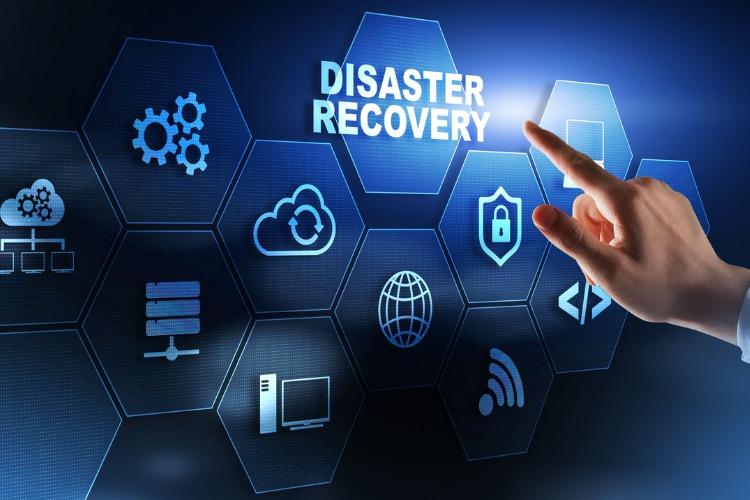The Role of Data Recovery in Cyber Resilience
Data Recovery is the key to achieving an effective cyber resilience strategy in the event of a cyber-attack to resume business operational resiliency. It empowers businesses to quickly recover their critical data, minimise downtime, and prevent against potential threats. Data recovery planning is crucial for business continuity, allowing organisations to seamlessly recover data and minimise the impact of an incident.
Organisations typically prioritise prevention and protection as key components of their cybersecurity approach. While essential, these measures alone are no longer enough in an evolving threat landscape. Relying solely on prevention leaves gaps, as IT teams face growing challenges in securing diverse systems. To build a comprehensive cyber resilience strategy, it is vital for businesses to recognise the importance of integrating data recovery solutions alongside preventive efforts. The rise of cybercrime, such as ransomware or malware, can devastate a company's digital infrastructure and leave the organisation's data vulnerable. According to Verizon’s 2024, Data Breach Investigations Report, ransomware remains a top threat for 92% of all industries. This is where data recovery solutions and reactive risk controls can help when prevention fails.
The Path to Data Recovery Resilience
The era of simple data encryption attacks is over. Today, cyber threats have evolved to target an organisation’s data despite having backups in place.
Cybercriminals are now targeting backups with advanced ransomware tactics, including double and triple extortion. These methods not only prevent organisations from recovering their data but also coerce them into paying ransoms. Even then, there’s no certainty of data restoration. According to the Veeam Ransomware Trends Report, of the 76% of the surveyed organisations that paid ransom fees, only 52% achieved full recovery. This highlights the risks involved in succumbing to ransomware demands. Further, an alarmingly low 23% of companies claim to have a fully unified strategy for cyber preparedness.
Given the high frequency of ransomware attacks, it is essential for businesses to maintain multiple copies of their data in an immutable or unchangeable format. The impact of downtime can be substantial, especially for organisations that depend heavily on continuous operations, with recovery speed directly influencing both financial losses and operational stability. According to Ponemon, a data protection research firm, downtime costs have risen to an alarming $9,000 per minute for large organisations. Ponemon additionally discovered that reputational damage inflicted the most significant damage to businesses due to downtime costs. The second most common is revenue loss, and lastly, the loss of internal productivity of IT teams has been reported to cause further damage.
An effective data recovery strategy employs a combination of immutable air-gapped backups in coordination with pre-established off-network cleanrooms, forensic analysis and point-in-time rehydration and decryption. This can minimise the impact of a breach while making sure that an organisation's vital data assets are secure.
Immutable Backup Strategy
An immutable backup is a powerful solution that locks down an organisation's critical data making it impossible to modify or delete during a set period. This safeguard ensures that sensitive data stays untouchedand secure, even when a cyberattack occurs, giving an organisation peace of mind knowing the data remains intact until the immutability window ends.
To ensure the effectiveness of immutable backups, it is critical for IT teams to first pinpoint an organisation's vital data assets. This step is essential for preventing the duplication of unnecessary data, saving time and improving cost-efficiency. These Vital Data Assets (VDA) are sensitive, regulated or revenue or mission-enabling data that can threaten business viability if exposed, compromised or made unavailable. This data is likely to be held hostage in exchange for a ransom fee.
Once the key data has been identified an immutable backup can be created.
Clean rooms and Forensic Analysis
The safest way to restore these backups is to airgap them in a completely isolated and secure networking environment, known as a cleanroom. It isolates the data from the organisation's live production system and network, adding an extra layer of protection for your backup data, and making it virtually impossible for malicious actors to compromise it. This increases the guarantee of recovery after experiencing a breach, as the data is no longer susceptible to the same risks as other data in live production.
Cleanrooms are also essential for forensic analysis to certify the data’s integrity and usability of data and systems, before recovering them. A forensic analysis provides insight into which applications can be safely restored without causing conflicts in production systems to ensure they are free from any malware.
Cyber Recovery Life Cycle Management
It is also crucial to closely monitor any changes in production environments, stay abreast of the evolving threat landscape, and keep track of shifts in key regulations or compliance requirements.
These changes should be seamlessly updated into an organisation’s designated data recovery plan based on a comprehensive change impact analysis. The lessons learned should be documented, and remedial actions promptly implemented, maintaining an up-to-date data recovery plan and procedures 24x7x365 is essential to ensure readiness to effectively counter any potential attacks.
In today's rapidly evolving threat landscape, organisations must carefully balance preventive and reactive risk controls including data recovery solutions to achieve a holistic cyber resilience plan.

